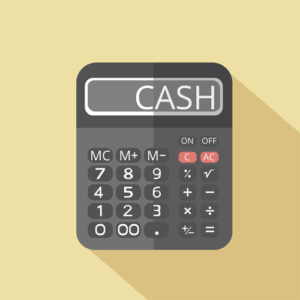Content

One tricky point to remember is that retained earnings are not classified as assets. Instead, they are a component of the stockholder’s equity account, placing it on the right side of the accounting equation.
- The purchase of goods on credit leads to an increase in an asset by $10,000 with a simultaneous increase in liability of $10,000.
- Your bank account, company vehicles, office equipment, and owned property are all examples of assets.
- In order to see if the accounts balance, we have to use the accounting equation.
- An income statement is prepared to reflect the company’s total expenses and total income to calculate the net income for different purposes.
- Marketable securities include short-term investments in stocks, bonds , certificates of deposit, or other securities.
Net income or net loss equals the company’s revenues less its expenses. Revenues are inflows of money or other assets received from customers in exchange for goods or services. Expenses are the costs incurred to generate those revenues. The balance sheet is also known as the statement of financial position and it reflects the accounting equation. The balance sheet reports a company’s assets, liabilities, and owner’s (or stockholders’) equity at a specific point in time. Like the accounting equation, it shows that a company’s total amount of assets equals the total amount of liabilities plus owner’s (or stockholders’) equity.
These will affect the accounting equation as follows:
Cash activities are a large part of any business, and the flow of cash in and out of the company is reported on the statement of cash flows. Changes in assets and liabilities caneitherincrease or decrease the value of the organization depending on the net result of the transaction. Sally’s deposit increased her cash account and also increased her equity account, keeping the accounting equation in balance. These additional items under owners’ equity are tracked in temporary accounts until the end of the accounting period, at which time they are closed to owners’ equity. After the company formation, Speakers, Inc. needs to buy some equipment for installing speakers, so it purchases $20,000 of installation equipment from a manufacturer for cash. In this case, Speakers, Inc. uses its cash to buy another asset, so the asset account is decreased from the disbursement of cash and increased by the addition of installation equipment. Now that we have a basic understanding of the equation, let’s take a look at each accounting equation component starting with the assets.
Is credit card an asset or liability?
Credit cards are a liability and not an asset, as the money on the card is not yours and this credit line does not increase your net worth.
If any event such as management, reputation, loyalty does not possess money value, it has no place in the accounting equation. The accounting equation helps in assisting the accounting professionals and accountants to maintain accuracy. Company credit cards, rent, and taxes to be paid are all liabilities.
Management Accounting
Equity is simply the difference between assets and liabilities. The owner has positive equity only to the extent that assets exceed liabilities. If a business has $1,000 of assets and $500 of liabilities the $500 of liabilities are, in effect, a claim on the assets. Equity is the difference between the assets and liabilities, or $500. Liabilities are the company’s existing debts and obligations owed to third parties.
Company ZZK plans to buy office equipment that is $500 but only has $250 cash to use for the purchase. Accounting equation explanation with examples, accountingcoach.com. Total all liabilities, which should be a separate listing on the balance sheet.
Accounting Equation (Explanation)
Since Speakers, Inc. doesn’t have $500,000 in cash to pay for a building, it must take out a loan. Speakers, Inc. purchases a $500,000 building by paying $100,000 in cash and taking out a $400,000 mortgage. This business transaction decreases assets by the $100,000 of cash disbursed, increases assets by the new $500,000 building, and increases liabilities by the new $400,000 mortgage. On 5 January, Sam purchases merchandise for $20,000 on credit. As a result of the transaction, an asset in the form of merchandise increases, leading to an increase in the total assets. Assetsare what your business owns and are resources used to produce revenue. Current assets are short-term assets like cash and stock inventory, while fixed assets are long-term assets like equipment and land.
- This is because creditors – parties that lend money such as banks – have the first claim to a company’s assets.
- Let’s plug this into the equation to see if Ed’s accounts are balanced.
- The company’s assets are equal to the sum of its liabilities and equity.
You will learn about other assets as you progress through the book. Let’s now take a look at the right side of the accounting equation. Using the numbers from the Edelweiss Corporation’s balance sheet, we can see the accounting equation has been properly used, with assets equal to total liabilities plus equity. The accounting equation holds at all times over the life of the business. When a transaction occurs, the total assets of the business may change, but the equation will remain in balance.
Shareholders’ Equity in the Accounting Equation
This shows all company assets are acquired by either debt or equity financing. For example, when a company is started, its assets are first purchased with either cash the company received from loans or cash the company received from investors. Thus, all of the company’s assets stem from either creditors or investors i.e. liabilities and equity. Uses the accounting equation to show the relationship between assets, liabilities, and equity.

Because there are two or more accounts affected by every transaction carried out by a company, the accounting system is referred to as double-entry accounting. For a company keeping accurate accounts, every business transaction will be represented in at least two of its accounts. For instance, if a business takes a loan from a bank, the borrowed money will be reflected in its balance sheet as both an increase in the company’s assets and an increase in its loan liability. The https://www.bookstime.com/ is also called the basic accounting equation or the balance sheet equation. The basic accounting equation is less detailed than the expanded accounting equation. The expanded accounting equation shows more shareholders’ equity components in the calculation.
Relax—run payroll in just 3 easy steps!
Remember, when a customer purchases something “on account” it means the customer has asked to be billed and will pay at a later date. Are obligations to pay an amount owed to a lender based on a past transaction. It is important to understand that when we talk about liabilities, we are not just talking about loans. Money collected for gift cards, subscriptions, or as advance deposits from customers could also be liabilities.
It gives meaning to the balance sheet structure and is the foundation of double-entry accounting. Double-entry accounting is the practice where one transaction affects both sides of the accounting equation. This is used extensively in journal entries, where an increase or decrease on one side of the equation may be explained by an increase or decrease on the other side. This is sometimes referred to as the business’s, shareholders’, or owner’s equity. This is the business’s total assets minus its total liabilities.
Pay Rent
Eventually that debt must be repaid by performing the service, fulfilling the subscription, or providing an asset such as merchandise or cash. Some common examples of liabilities include accounts payable, notes payable, and unearned revenue. Generally Accepted Accounting Principles assumes that all assets of a business are either owned outright by the business owners or are subject to the claims of creditors. Creditors include anyone who has loaned money or extended credit to the business. Loans and other forms of extended credit are called liabilities.
- This reduces the cash account and reduces the accounts payable account.
- As our example, we compute the accounting equation from the company’s balance sheet as of December 31, 2021.
- This equation is also the basis for the most basic of accounting reports, the aptly named Balance Sheet.
- The basic accounting equation is very useful in analyzing transactions with the global practice of double entry in bookkeeping and ledger organization.
